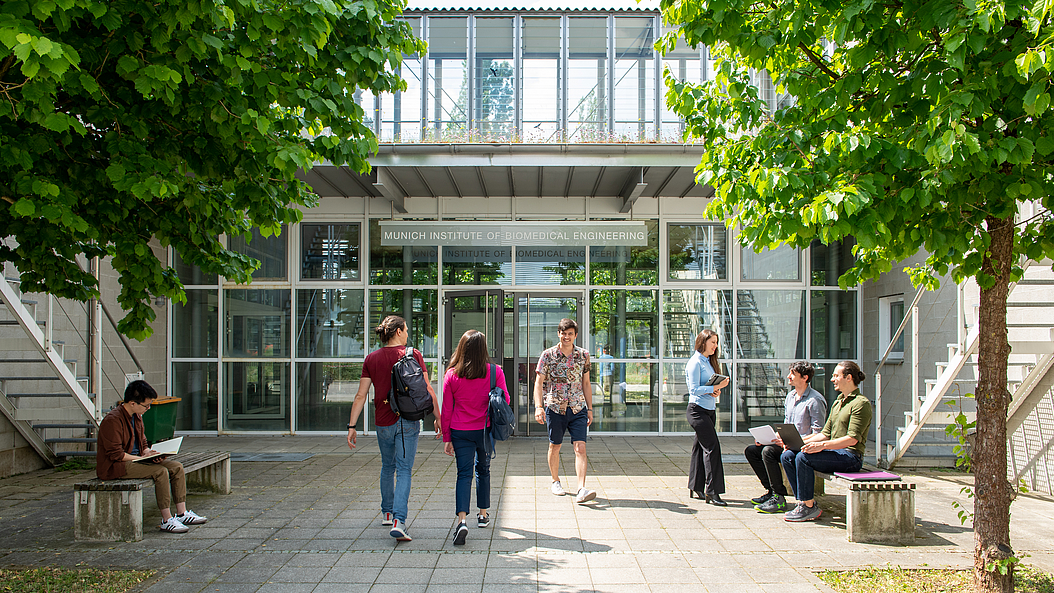About MIBE
Guided by the principle of “Engineering for Health and Life,” MIBE is an Integrative Research Institute that unites the expertise of TUM researchers in biomedical engineering.
Approximately 60 professors from various TUM schools are spearheading biomedical engineering research at the intersection of medicine, engineering, natural sciences, and life sciences. Through interdisciplinary collaboration, we are shaping the future of diagnostics, therapy, and personalized medicine, from molecular basic research to clinical application.
MIBE central building
The central building in Garching contains laboratories, workshops, a lecture hall, administrative offices, and workspaces for several research groups.
Research groups in the MIBE central building
- Biomolecular Nanotechnology - Prof. Dr. Hendrik Dietz
- Sensors and Wearables for Healthcare - Prof. Dr. Can Dincer
- Epigenetics of Skin Aging - Prof. Dr. Karima Djabali
- Magnetic Fields - PD Dr. Bernhard Gleich
- Nuclear Magnetic Resonance - Prof. Dr. Axel Haase
- Bio-Inspired Information Processing - Prof. Dr. Werner Hemmert
- Biomedical Imaging - Prof. Dr. Julia Herzen
- Computational Imaging and Inverse Problems - PD Dr. Tobias Lasser
- Biomedical Physics - Prof. Dr. Franz Pfeiffer
- Neurobiological Engineering - Prof. Dr. Gil Westmeyer
- Neuroelectronics - Prof. Dr. Bernhard Wolfrum
